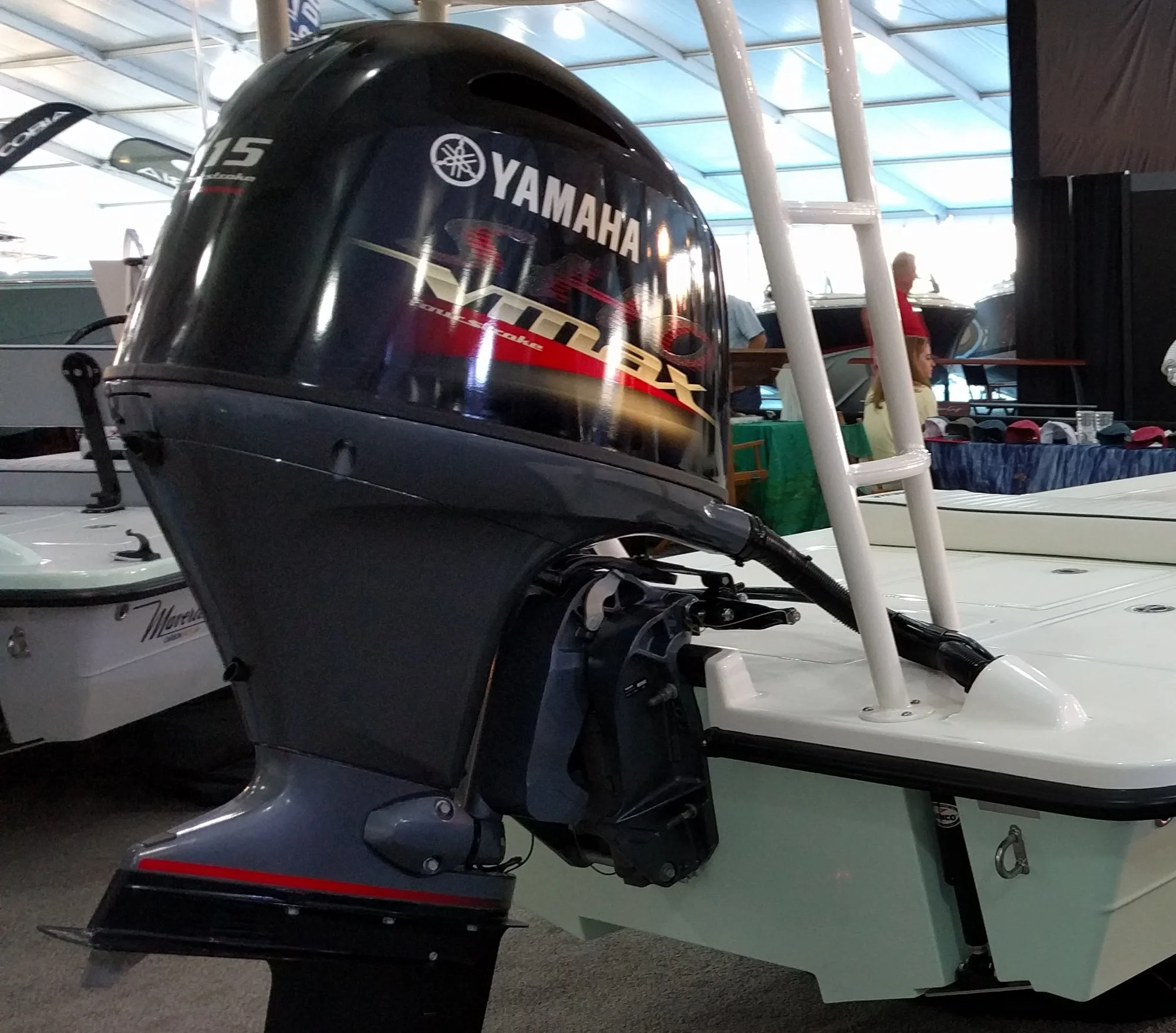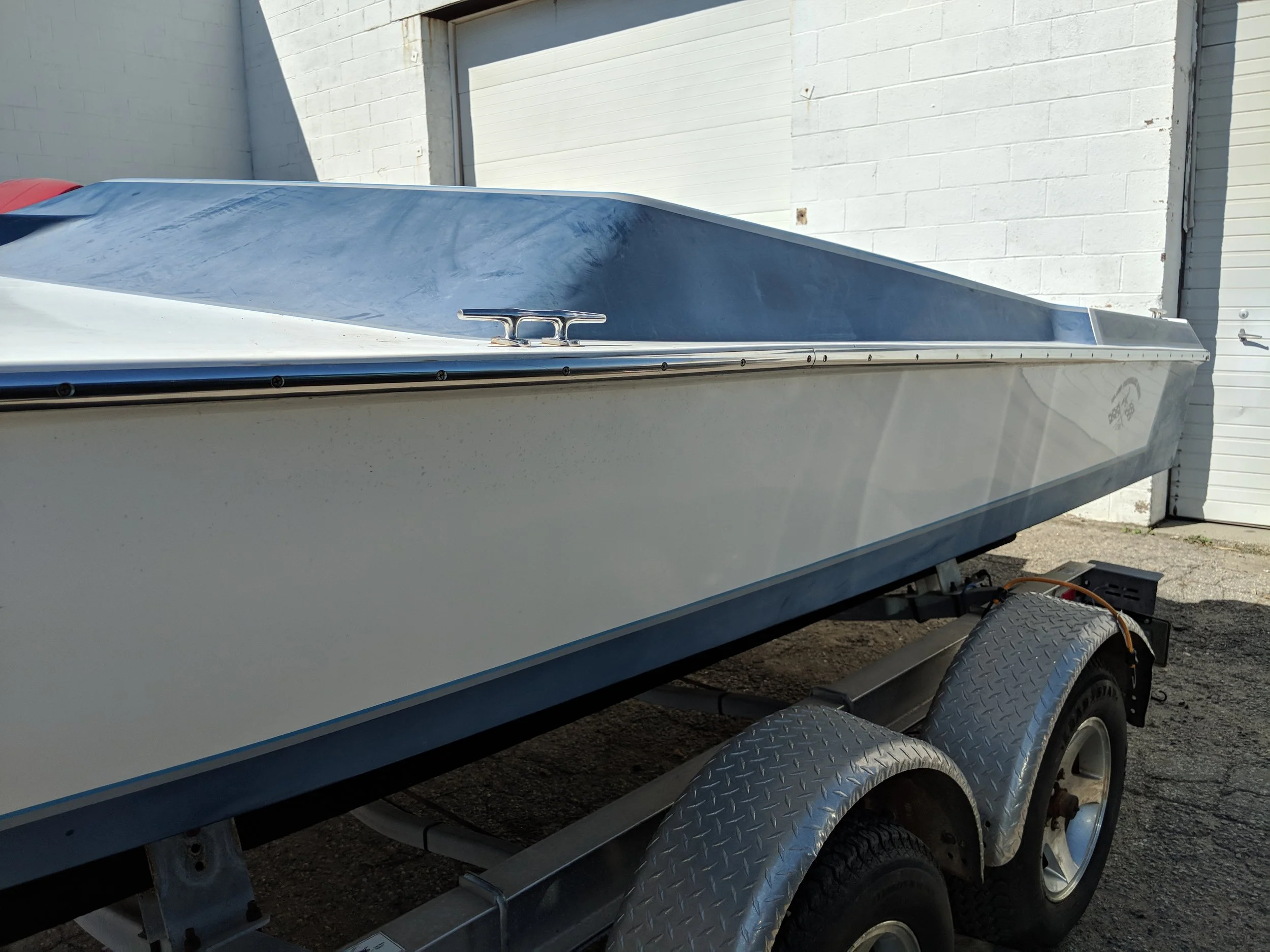Midsize Outboard Engines: New Models, More Power
Even though most performance boaters are looking for the most power possible on their hull, I get more excited about balance and efficiency. Particularly with smaller hulls, I would rather sacrifice top end with better handling and mileage. We have talked about restorations, and since there were so many small hulls made in the 80s and 90s, I love the repower options for some of these 16’ to 22’ boats. Even our project boat, the 22’ Activator, I am torn on what power to go with; should we go with a smaller 175 / 200, that is lighter and still gets great performance, or should we push it a bit and get a 225 / 250, adding weight but definitely getting into some exciting speeds. Let’s talk about some midsize outboards that are great repower options, as well as some to consider when you aren’t looking to break the sound barrier or your bank account.
Old and New
Even though four stroke outboards tended to be dogs not that long ago, the latest ones have utilized larger displacements, while reducing weight, making for engines that now rival two strokes in most cases. One of the most exciting new engines here is the Mercury 150 ProXS four stroke, which is replacing the venerable 2.5 ProXS Optimax engine. Based on the proven 3.0L four stroke 150 HP, the ProXS version has stiffer motor mounts, an improved lower unit with low water pickups and a slightly lower gear ratio of 2.07:1. Additionally, Mercury has tuned the engine to make 5 more HP, to produce 163 HP at the prop; with an extra 200 RPM squeezed out to 6,000. Another fancy thing is Mercury has programmed the engine to boost fuel and air delivery under acceleration to improve performance, then change it to optimize cruising efficiency. Keep in mind, many engines in the 80s and 90s were rated at the crank, so an old 150 or 175 would be no match for this new engine performance wise.
Middle Weight
150 ProXS four stroke, a solid offering, with low water pickups, performance mounts, light and large displacement.
At 455 Lbs, it is only slightly heavier than old two stroke 2.5 Mercs and 2.6 Evinrudes. Perfect replacement for older 135 to 200 HP engines. Have an old sport boat under 21 feet? This engine would be ideal. Plus it looks great. The closest competitors are soon to be discontinued, and include the Evinrude Etec 135 HO, the 150 and the Mercury ProXS 150/175. When you see what the used market is asking for old tech engines, this new 150 makes a lot of sense financially as well.
Another option in this category is not new but comes from the proven Yamaha Vmax SHO 2.8L platform in the 150 and 175 HP range. Although pushing the envelope in the weight department, these engines are smooth and powerful. Optimized for performance with tuned intakes and the ability to rev to 6,000 RPM, these engines are great performers with solid efficiency. The double overhead cam design is more sophisticated than the 150 Mercury single overhead design, making these very competitive packages. One more advantage is the 1.86:1 gear ratio. If the 150 is enough, I would go Merc 150 ProXS for the value, if you need that extra little punch, or are replacing a 200, go with the 175 Vmax SHO.
Two Stroke
The most cutting edge engine in the 150 to 200 range is the 2.7L Evinrude G2, which is an advanced direct injection two stroke that gets better emissions and is more fuel efficient than its competitors. Lots of technology in these and they are powerhouses compared to the four strokes at lower and mid RPM. The trick with these is to order without Evinrude’s dynamic power steering mid bracket and use an aftermarket front mount steering system instead. This will reduce the weight of the engine overall. Not only is a front mount lighter than the DPS, it is mounted in front of the engine, which is better dynamically. Still, this is the heaviest at 495 Lbs., so be careful repowering light boats. The 150 HO G2 is great value though, and is a real performer compared to the four strokes. If weight is not an issue, go 150 HO G2, or 200 G2 with the regular mid, non DPS. The weak spot is the 2.17:1 gear ratio. Technically you could swap it out for the 1.86 gears found in the 3.4 G2, as the gearcase is the same.
The 150 G2 HO seen here with the trac mid with no dynamic steering, the best way to get it. I like how they look normally, just not the neon green leopard print, thankfully you can change that.
Side Note
If you’re contemplating going with a new big block 200 / 225 vs. a lighter 150 / 175, you will give up some brute power and top end but sometimes you can invite some bad handling characteristics. A new 175 mentioned above will be barely slower, 1 or 2 MPH at the most, than an old two stroke 200. A new 150 could save you $2,500 or more and still only be 4 or 5 MPH slower. Performance race boat maker Nitra, often sells their 22’ with the G2 150 HO, and the boat is only about 4 MPH slower than a 2.7L 200. As long as a hull is not underpowered, that money saved is a lot of fuel, while being safer. Consider most of your time is spent at half throttle or ¾ throttle, not full throttle. You can tell I’m getting old.
Hidden Gem
The Suzuki DF140 is a small displacement, 2.0L, DOHC design that packs a punch at 140 HP and only 395 Lbs. By today’s standards, that’s light. If you have a smaller hull that absolutely can’t handle more than a 400 pound engine, yet you crave new technology and efficiency, this is a great option. This power plant is proven to be bulletproof and comes in white or black which is nice. The gear ratio is horrendous at 2.59, so you will be using a fairly high pitch prop, yet it can rev to 6,200 RPM so it can wind up pretty good.
Small Packages
In the 90 to 115 range, you get some great options for engines. These are for small performance hulls, which are kind of rare now. But for repowering vintage sport boats under 18 feet, you have plenty of options. The Mercury 115 ProXS and Yamaha 115 Vmax SHO are the top ones in my opinion. Light enough at around 359 / 377 Lbs, and both are rev happy to about 6,300 RPM. Quiet and efficient, plus they are nice and compact, not like the old midsize four strokes that were the size of nuclear reactors for small countries. The Merc has an option for a larger command thrusts gearcase with 2.38:1 gears, while the Yamaha has 2.15:1. In general, it is nicer to have the lower numeric (higher gear) ratio for performance boats, so you don’t have to run a high pitch prop. Most of these engines are made for non performance boats, so there is a compromise.
Potent
The popular 115 Vmax SHO is a great small package, light and revs to 6,300 RPM. Economical too.
Mercury and Yamaha make this same platform in 90 HP and the new Yamaha Vmax SHO 90 is lighter at 353 Lbs. so if you’re looking to save some money, these could be good options too.
The Evinrude Etec 115 HO is a challenger here, older tech 1.7L V4, and a little heavier at 390 Lbs, the two stroke will have more low end punch than the Merc and Yam, and the 2.07:1 gears will be better on fast hulls. This is also available as a 90 HO if you want to save some money. The regular 90 is much lighter at 325 Lbs, but in that case, I would opt for the newer engines.
The Evinrude Etec's in the 90 to 150 range are still good packages, particularly the 115 and 90 HO.
Of course, if you have a tiny boat, or mini hull; the Mercury Racing 60 Formula Race is the coolest small outboard. 247 Lbs, bulletproof, a 15” inch mid, solid mounts; it is the only engine to get in this range. Mercury Racing has a high performance Cleaver prop for it and there are a few aftermarket options as well.
The new lower unit on the 150 ProXS four stroke has low water pickups, great for elevated transom heights.
The Suzuki DF90 is one of the lightest 90 horsepower engines on the the market at 343 Lbs, and its 4 cylinder design makes it a good option for light small hulls.












